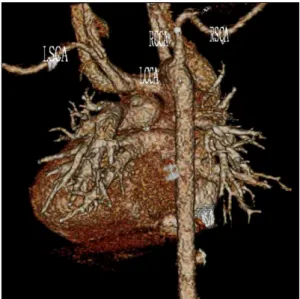Korean J Thorac Cardiovasc Surg 2014;47:32-34 □ Case Report □ http://dx.doi.org/10.5090/kjtcs.2014.47.1.32 ISSN: 2233-601X (Print) ISSN: 2093-6516 (Online)
− 32 −
Departments of
1Thoracic and Cardiovascular Surgery and
2Anesthesiology and Pain Medicine, Kyungpook National University School of Medicine
Received: July 1, 2013, Revised: October 8, 2013, Accepted: October 10, 2013
Corresponding author: Youngok Lee, Department of Thoracic and Cardiovascular Surgery, Kyungpook National University Hospital, Kyungpook National University School of Medicine, 130 Dongdeok-ro, Jung-gu, Daegu 700-721, Korea
(Tel) 82-53-420-5665 (Fax) 82-53-426-4765 (E-mail) yolee1210@knu.ac.kr
C
The Korean Society for Thoracic and Cardiovascular Surgery. 2014. All right reserved.
CC
